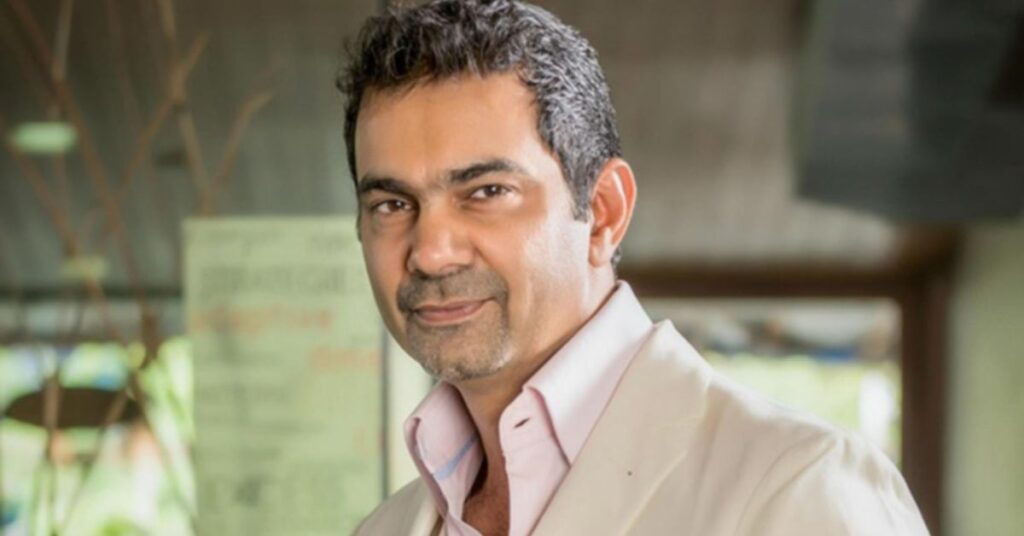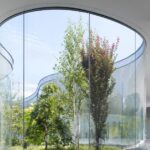Exploring the Mind of Sanjay Puri : Sanjay Puri – Defying Convention, Designing Identity In the realm of contemporary Indian architecture, few names resonate as deeply as Sanjay Puri. A master of fluid forms, contextual sensitivity, and bold experimentation, Puri has emerged as a true innovator, crafting spaces that are both aesthetically arresting and environmentally responsive. His firm, Sanjay Puri Architects, founded in 1992, has received over 350 international and national awards, including multiple wins at the World Architecture Festival (WAF), Architizer A+ Awards, and Rethinking the Future Awards. This blog delves into the mind of Sanjay Puri, drawing from key interviews and public dialogues to understand the ideas, influences, and intentions behind his work. It isn’t just an exploration of buildings—it’s an insight into how architecture becomes a language for culture, sustainability, and innovation in his hands. A Personal Approach to Design For Sanjay Puri, architecture is deeply personal. His projects often reflect a balance between intuition and logic, creativity and context. In several interviews, including with platforms like Dezeen and ArchDaily, Puri emphasizes how he begins each project not with a form in mind, but with an understanding of the site, climate, and cultural backdrop. He once remarked, “A building must respond to where it is. It cannot exist in isolation.” This site-centric approach is visible in works like the 72 Screens Office in Jaipur, where the building façade is inspired by traditional jaali screens, offering shade while creating a dialogue between modern geometry and heritage craft. Influences …
Interviews: Inside the Mind of Sanjay Puri

Exploring the Mind of Sanjay Puri :
Sanjay Puri – Defying Convention, Designing Identity
In the realm of contemporary Indian architecture, few names resonate as deeply as Sanjay Puri. A master of fluid forms, contextual sensitivity, and bold experimentation, Puri has emerged as a true innovator, crafting spaces that are both aesthetically arresting and environmentally responsive. His firm, Sanjay Puri Architects, founded in 1992, has received over 350 international and national awards, including multiple wins at the World Architecture Festival (WAF), Architizer A+ Awards, and Rethinking the Future Awards.
This blog delves into the mind of Sanjay Puri, drawing from key interviews and public dialogues to understand the ideas, influences, and intentions behind his work. It isn’t just an exploration of buildings—it’s an insight into how architecture becomes a language for culture, sustainability, and innovation in his hands.
A Personal Approach to Design
For Sanjay Puri, architecture is deeply personal. His projects often reflect a balance between intuition and logic, creativity and context. In several interviews, including with platforms like Dezeen and ArchDaily, Puri emphasizes how he begins each project not with a form in mind, but with an understanding of the site, climate, and cultural backdrop.
He once remarked, “A building must respond to where it is. It cannot exist in isolation.” This site-centric approach is visible in works like the 72 Screens Office in Jaipur, where the building façade is inspired by traditional jaali screens, offering shade while creating a dialogue between modern geometry and heritage craft.
Influences and Early Inspirations
In discussions about his early influences, Sanjay Puri often credits Laurie Baker, Le Corbusier, and Zaha Hadid—a unique trio that reflects his multidimensional style. From Baker, he absorbed the ethics of cost-efficiency and sustainability, from Corbusier, the essence of monumentality, and from Hadid, the fluid dynamism of contemporary form. Educated at the Academy of Architecture in Mumbai and later working under the legendary Hafeez Contractor, Puri developed a sharp contrast between mainstream commercial design and his own creative calling. He gradually forged a niche that blends Indian materials and techniques with futuristic design sensibilities.
Thinking in Forms: Geometry, Light, and Fluidity
Sanjay Puri’s architectural language is distinguished by bold, sculptural forms and an expressive use of geometry. But his forms are never arbitrary—they emerge from programmatic needs, climatic logic, and spatial experience. His projects like the Courtyard House in Rajasthan and the Sky One tower in Pune display a rhythmic use of curves, cantilevers, and grids to create a spatial narrative that’s functional yet visually captivating. He believes in “thinking in sections”, often starting his design process with sectional studies to understand light movement, air flow, and volumetric transitions. In an interview, Puri stated, “Drawings can be deceptive. A section reveals how a space breathes.”
This approach also ties into his experiential design ethos—he doesn’t just want people to look at buildings; he wants them to feel them, move through them, and experience changing light, temperature, and spatial compression or expansion.
Sustainability Rooted in Climate Logic
Unlike many who treat sustainability as an add-on, Sanjay Puri weaves it into the DNA of his design. Many of his buildings are naturally ventilated, sun-shaded, and resource-conscious, without overt reliance on technology. Take the Bombay Art Society building, whose bold form is matched by passive cooling techniques and daylight optimization. Or the Courtyard Office, where the layout allows light and ventilation to enter all workspaces naturally, drastically reducing energy usage.
He often emphasizes that “green architecture isn’t about putting solar panels on the roof—it’s about how you orient your building, what materials you use, and how people live inside.”
Contextual Narratives: India as a Design Palimpsest
A recurring theme in Puri’s interviews is his belief that India’s complexity should not be flattened by homogenized design. Whether it’s the hot desert of Rajasthan, the urban density of Mumbai, or the coastal vibe of Goa, each project takes cues from its environment.
The Hotel at Mount Abu, for instance, is shaped like a series of steps following the topography, with staggered terraces, open courtyards, and stone cladding that reflects local vernacular. In contrast, the Skyline Office in Ahmedabad uses color strategically—saffron, red, ochre—not just for visual appeal, but to resonate with the cultural identity of the region.
For Puri, context isn’t a limitation—it’s a creative driver.
The Role of Collaboration
Despite being known for his signature style, Sanjay Puri credits much of his firm’s success to collaboration and mentorship. In interviews, he often mentions that his team—now over 70 architects—is integral to the iterative, conceptual process. Weekly design reviews, model-making, and open discussion shape the firm’s agile yet focused culture.
He encourages young architects to “unlearn” preconceptions and think independently. This culture of curiosity and constant evolution has allowed his firm to tackle a diverse portfolio—from educational institutions to corporate offices, luxury residences, and hospitality projects.
Looking Ahead: The Future of Indian Architecture
In his public talks and panels, Sanjay Puri is vocal about the responsibility of architecture in shaping modern India. He believes that as Indian cities grow, architecture must rise beyond just solving problems—it must inspire, challenge, and reflect the diverse spirit of its people.
He warns against the danger of global sameness in urban design and urges architects to harness India’s rich regional diversity, traditional wisdom, and artisanal heritage. He envisions a future where buildings not only respond to local needs but also push the boundaries of innovation, identity, and social impact.
Conclusion: More Than an Architect
To step inside the mind of Sanjay Puri is to enter a world where architecture is both poetry and problem-solving. It’s a discipline that embraces contradiction—between logic and emotion, tradition and technology, lightness and mass. Through decades of experimentation, awards, and impactful design, Puri has shown that architecture in India doesn’t need to borrow its voice from the West. It has its own dialect—raw, colorful, intuitive, and evolving.
Sanjay Puri continues to prove that true architecture goes beyond walls and roofs—it tells stories, it shapes environments, and most importantly, it redefines how we live.


